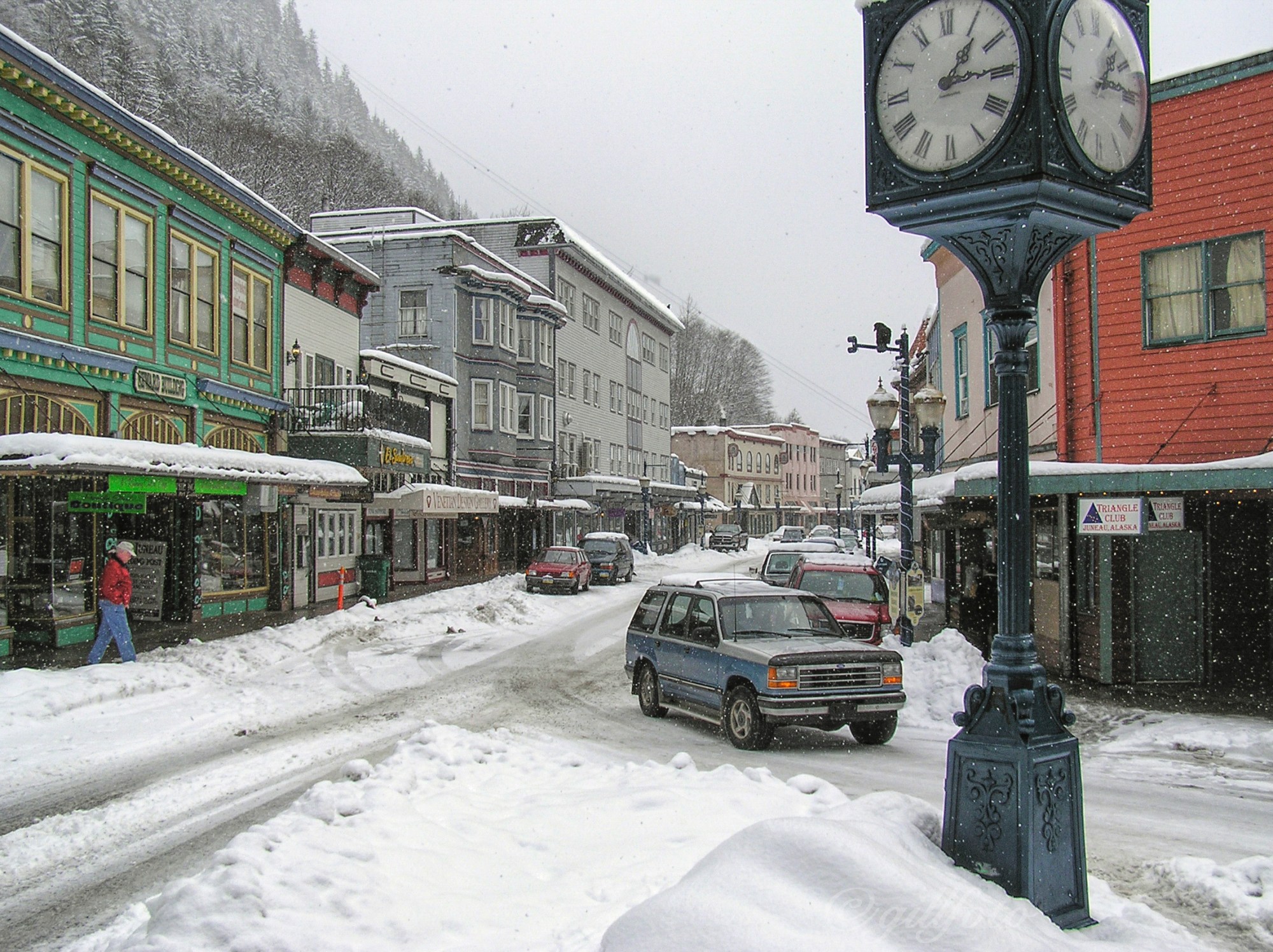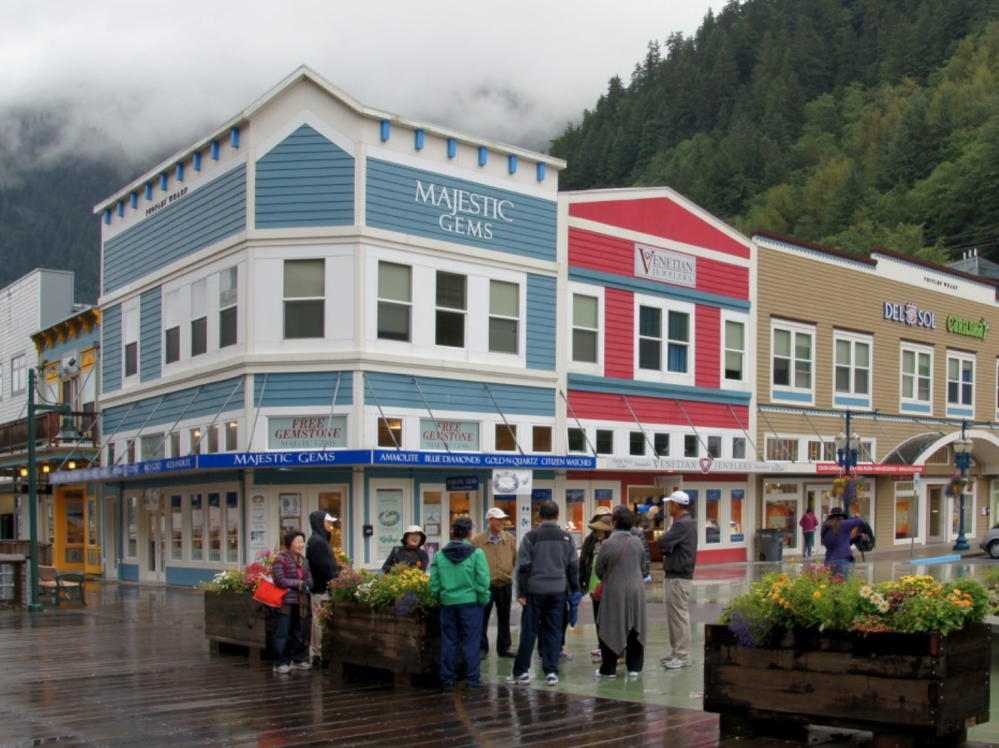How to Dress in Juneau By the Month

Juneau is quite a bit different as compared to other Alaskan cities like Fairbanks or Anchorage. It’s a unique island city with a humid continental climate and a zone conflict between tropical and polar air masses. The Pacific Ocean and local topography moderate the temperature extremes.
As you probably know, the Alaskan capital isn’t a place for sunbathing with wet weather on an average of 222 days and an average of 62 inches of rainfall annually. It rarely gets too warm other than occasional days where it can exceed 80 degrees Fahrenheit during the summer. Generally, during the year’s warmest season, highs are in the mid-60s and lows drop to the high 40s.
Winter highs in Juneau reach 45 degrees and lows dip into the mid-20s. About 95 inches of snow falls a year with January the snowiest month. The first snowfall often occurs in early November but it can be as late as mid-December, with the last of the snow typically ending in late March.
When it comes to what to wear in Juneau, you’ll want to consider the month you’ll be visiting but the general advice is layers and the well-known phrase, “prepare for the worst and hope for the best.” Even on a warm sunny day, it can turn rainy and cold or vice versa.
January
Dressing for Juneau in January requires careful consideration of the cold, wet, and often windy winter conditions. As noted, it’s the snowiest month of the year, so you’ll want to bring the essential waterproof and insulated gear to stay warm and comfortable. The average amount of snowfall is 24.5 inches this month but in 2024, 69.2 inches fell at the airport, near record levels.
The keys to appropriate dress throughout the winter months include:
- Layering, starting with a base layer of moisture-wicking material to keep sweat away from your skin, followed by an insulating mid-layer like a fleece sweatshirt. Thermal leggings under insulated pants are essential.
- Your outer layer should be a windproof, waterproof jacket with insulation for additional warmth and to protect from rain or snow.
- Waterproof, insulated boots are a must for keeping your feet dry and warm. Thick, wool socks are also a good idea.
- Be sure to bring accessories like gloves, a warm hat, and scarves to keep extremities protected.
- Don’t forget sunglasses as they aren’t just necessary for summer. On sunny days they’ll help protect your eyes from the glare due to the reflection off the snow.

February
Dressing for Juneau, Alaska, in February requires similar strategies as in January. Generally, the weather is similar. Temperatures can be quite cold, typically ranging from 25°F to 35°F. Sometimes there can be slightly colder spells and while January is statistically snowier, it can snow more in February, especially during the second half of the month, which means there are likely to be snow-covered roads and trails. but in general, the weather is similar.
Plan to dress the same as outlined for January, always keeping layers in mind with warm, waterproof boots and thick wool socks to keep your feet dry.

March
Once again, you’ll need to prepare for winter weather in Juneau if you plan to visit in March, but things are starting to change slightly with the transition to spring. The last snowfall is usually around late March and the average high temperature warms to 40 degrees with lows just below freezing.
While you are likely to encounter some snow, especially earlier in the month, as March progresses there’s an increasing chance of sunny days and warmer temperatures. Those sunny days can lead to melting and slushy conditions later in the month. That means those waterproof, insulated boots are still likely to be your standard footwear.

April
Spring has arrived to Juneau which means in April, the warmer temperatures start to melt what snow remains. There are also more sunny days compared to earlier months, making it a great time to enjoy outdoor activities by bundling up a bit. However, be prepared for a mix of rain and cooler days, especially earlier in the month. The average high climbs to 48 degrees while the low is still rather chilly at just over 35 degrees.
The keys to appropriate dress in April include:
- Layering, once again. Earlier in the month you’ll mostly want to follow the winter guideline, starting with a base layer of moisture-wicking fabric followed by a mid-layer like fleece and and a windproof, waterproof insulated jacket. But as April moves forward, you might want a cotton t-shirt as your base layer. Waterproof pants are still recommended and on colder days, you can wear thermal leggings underneath.
- Yes, you’ll still need waterproof boots. As conditions are often wet or slushy in April, be sure they have good traction.
- While light gloves are fine for sunnier days, chillier ones will require the standard winter gloves. A scarf and warm hat are still advisable, and sunglasses are always necessary.

May
In May, the weather continues to warm, with increasingly sunny days and longer daylight hours. However, be prepared for occasional rain. The average high temperature is now in the upper 50s while the low is around the mid-40s. It’s a great time for outdoor activities like hiking and with more humpback whales arriving after making their long journey from the south, whale watching can be enjoyed too. Of course, if you plan to head out on a boat, you’ll want some colder weather attire as it can be chillier out on the water.
Your May attire in Juneau is similar to April and should include:
- Layers, starting with a cotton t-shirt or moisture-wicking base followed by a lighter weight fleece as a mid-layer.
- A breathable, waterproof jacket is a must but it doesn’t need to be heavily insulated. You might want a light insulated jacket for cooler days.
- Lightweight, waterproof pants with thermal leggings beneath on chillier days make for the ideal bottoms.
- You’ll want comfortable walking shoes or hiking boots with a good grip. They should still be waterproof, particularly for wet, slushy areas.
- As early mornings and evenings are still quite cool, gloves and a light hat can come in handy.

June
Juneau’s weather in June is generally mild, with more sunshine compared to earlier months and an average high temperature in the low 60s. There’s still a chance of rain, so you’ll need to be prepared for changing weather. This is the perfect time for outdoor activities, from hiking and fishing to whale watching.
Follow the guidelines for May, continuing to focus on layers. The most important thing to remember is a breathable, waterproof jacket. You don’t need much or any insulation as you can always put on an extra layer if you plan to be out on the water. The key is a jacket that can keep your dry while allowing moisture to escape.

July
July is the peak of the tourist season in Juneau, and brings some of the warmest weather of the year with the mercury climbing to 63 degrees in the afternoon on average. You can also look forward to long days with the sun rising around 2:30 a.m. and setting just after 11:30 p.m. early in the month. The city tends to be quite lush this time of year with the average monthly precipitation at 12.2 inches.
Your July attire should include:
- Layers as always, starting with a cotton t-shirt followed by a light fleece or sweater that can be useful during the cooler mornings and evenings.
- You will want that waterproof jacket as July can still bring the occasional rain.
- For bottoms, wear lightweight pants, ideally a quick-drying pair for outdoor activities in case of rain. Some may find that it’s warm enough for shorts.
- Comfortable walking shoes or hiking boots that are at least water resistant and have good traction are advisable, especially if you plan to hike mountain trails or along the coast.
- Instead of a warm hat, wear a sun hat and sunglasses. If you’re going to be out on the water, however, a beanie can be useful.

August
August is the rainiest summer month but the average high temperature remains the same at 63 degrees. It’s typically a mix of warm and sunny days, with lots of vibrant greenery. Follow the same guidelines for July, ensuring you don’t forget that rain jacket. A sun hat and sunglasses are likely to be needed for those sunny days too.

September
As September marks the transition to fall, the weather can be less predictable, often with a mix of sunny and rainy days. The later in the month you arrive, the rainier it’s likely to be. The average high temperature drops to 57 degrees while lows are in the mid- to upper 40s. Temperatures are cooler toward the end of the month but this is when autumn’s brilliant foliage often starts to appear, making it a beautiful time for a hike.
In September, your attire should include:
- A moisture-wicking long-sleeve shirt or thermal base is best for your base layer to keep warm and dry. You’ll want a fleece or sweater as a mid-layer, particularly early or later in the day. With September seeing a fair amount of rain, once again, a waterproof jacket that allows for ventilation is necessary.
- For bottoms, wear quick-drying pants or lightweight waterproof pants beneath your main pants if you plan to be outdoors frequently.
- Waterproof shoes or boots with good traction are important for navigating slippery surfaces and staying dry.
- A warm hat and gloves will help protect against cool winds.

October
With fall officially here, so are the cooler temperatures, with the average high now 55 degrees and the low at 40 degrees. The rainfall increases and so do the autumn colors which become more pronounced. There’s really no difference from September as far as what to wear in Juneau although you might need that warm hat and gloves more often. Your waterproof jacket should have good insulation now, however, if you plan to spend lots of time outdoors.

November
Both rain and snow can occur in November, when it’s often cool and wet, making the transition to winter. The average temperatures range from 35 to 45, but it can dip below freezing, increasing the chances of snowfall. Be prepared for variable weather and check forecasts frequently, especially if you’re planning to take part in outdoor activities, as conditions can change quickly.
We’re back to the winter guidelines now, as per January.
- Start with a moisture-wicking long-sleeve shirt to keep your body warm and dry, followed by a fleece or insulated sweater to trap heat. Wear insulated, waterproof pants or regular pants with thermal leggings underneath if you won’t be participating in a lot of outdoor activities.
- You will need an insulated, waterproof winter coat now to protect from the cold winds and snow.
- Waterproof, insulated boots with good traction are critical, along with thick wool socks.
- Don’t forget the warm gloves, hat, and scarves.
- Sunglasses are still needed to help with the glare from the snow.
- Don’t forget sunglasses as they aren’t just necessary for summer. On sunny days they’ll help protect your eyes from the glare due to the reflection off the snow.

They say there is no such thing as bad weather, only bad clothing, so if you follow this guide, you’re sure to stay comfortable while enjoying an unforgettable experience in Juneau. As your experts on Juneau and its surrounds, should you need more advice, our staff at Alaska Luxury Tours is always here to help.

